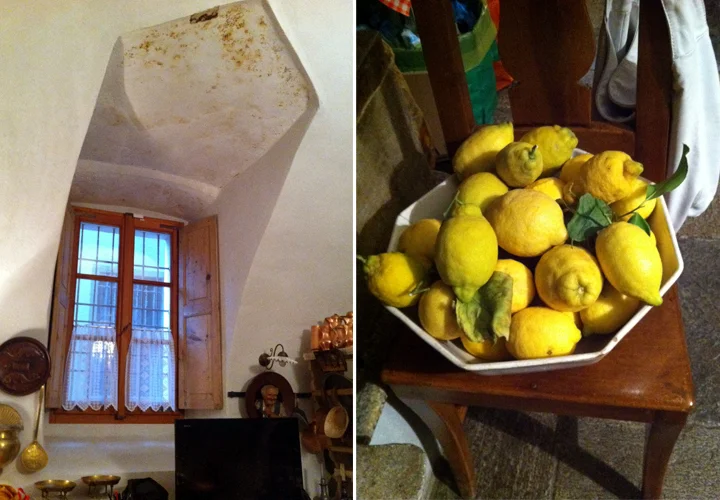The Alps
WHERE WE STAYED: Because Switzerland was frankly out of our price range we stayed in France and Northern Italy. We spend one night at the perfectly practical Hotel Ibis in Mulhouse, France. But the true prize were the nights we spent at Palazzo Lambertenghi B&B in Tirano. I have a separate post about this incredible museum & pensione.
BEST MEAL: The roadside food is pretty sweet in this region: Sauerkrout kolbasas from a vendor at the peak of the Stelvio Pass top the list for me.
NATURAL HIGH: Natural high is truly the right term! At almost 3000m, the Gavio Pass (Italy) feels like the rooftop of the world and its beauty is just astonishing. Alpine vistas include green fields, snow capped mountains and glaciers, sapphire lakes and rushing waterfalls. The area is carved out by great (or maybe death-defying) roads to explore the region by. We had a camera fixed to the hood of the car for some car commercial-worthy footage. I have to say it's one of the most beautiful areas I have eeeeever seen. I had one of those "if we veered off the cliff after seeing this, maybe it wouldn't even be so bad" moments.
Then of course, there is the Stelvio Pass (of 'Top Gear' fame), one of the world's most infamous driving roads. It crosrosses the mountin side with 36 hair-pin turns to the top. Once you've reached it, you'll notice that the landscape has transformed from lush green to rocky grey, inspiring the restaurant at the peak aptly named Tibet. The area buzzes with bikers and food vendors, but you can enjoy the snow-capped views in silence just a few minutes hike away.
For a different kind of steep visit the Via Mala (translation: bad path) in Switzerland. It is an impressively narrow, black gorge carved out by the Hinterrhein river that swells when the Alpine peaks melt in springtime.
DON'T MISS: The pristine city of Luzerne (Switzerland) is a gem. The main attraction is the area along the Reuss River and its wooden Chapel Birdge covered in paintings dating back to the 17th century. Enjoy a beer at one of the many bars or take a stroll gelato in hand.
Another stop should be the gorgeous Austrian city of Salzburg (meaning Salt castle). Its UNESCO protected old-town is the jewel of the Alps, with well-preserved Baroque architecture and mountain view dominated by the Hohensaltzburg castle (one of the largest in Europe). After much walking, we regained our strength on the terrace of Cafe Tomaselli, a famous place to sample Austrian desserts. Also, don't forget to buy some Mozartkugeln, chocolate covered pistachio marzipan treats, named after who else but the musical prodigy himself who hails from the city.
BIZARRO SIGHTING: It's incredible that you could go from a star-studded resort town like St. Moritz to pristine, silent nature in just a couple of kilometres.
HOW COULD THERE POSSIBLY BE SO MANY: Castles playing hide and seek in the mountain fog.
MOMENT OF PAUSE: Bagni Vecchi in Bormio, Italy. This is the place to rest your achy hiking feet in an outdoor pool of hot, thermal water while taking in a gorgeous mountain view. Afterwards, you can make your way to the underground grotto, get a massage or swim in the incredible 1st Century A.D. (!) Roman Baths. A day pass sets you back 44 euros though, but worth every penny!
NEXT TIME: I hope to see the impressive peaks in the winter, but I'll have to work on my sub-par skiing skills.
BEST WAY TO EXPLORE: Definitely by car. The roads are in excellent shape and you cover great distances leaving lots of time for stops & hikes. I've also heard good things about the Bernina Express train (from Davos to Tirano) which sounds restful and romantic.
WHAT TO PACK: The summer in the Alps is pretty mild. In the foothills on a sunny day 20C+ is common, but of course the mountain peaks have a much sharper climate, crisp and somewhat thin air and temperature of 5-10C. Must pack: hiking boots and lots of sweaters. I found myself wearing my short sleeve, wooly knits the most. Be prepared for rain too so that you can keep exploring even in less than ideal conditions.














































